Shooting on KODAK 16mm, Canadian DP Isabelle Stachtchenko brought stylish visuals to director Matthew Rankin's absurdist comedy 'Universal Language'
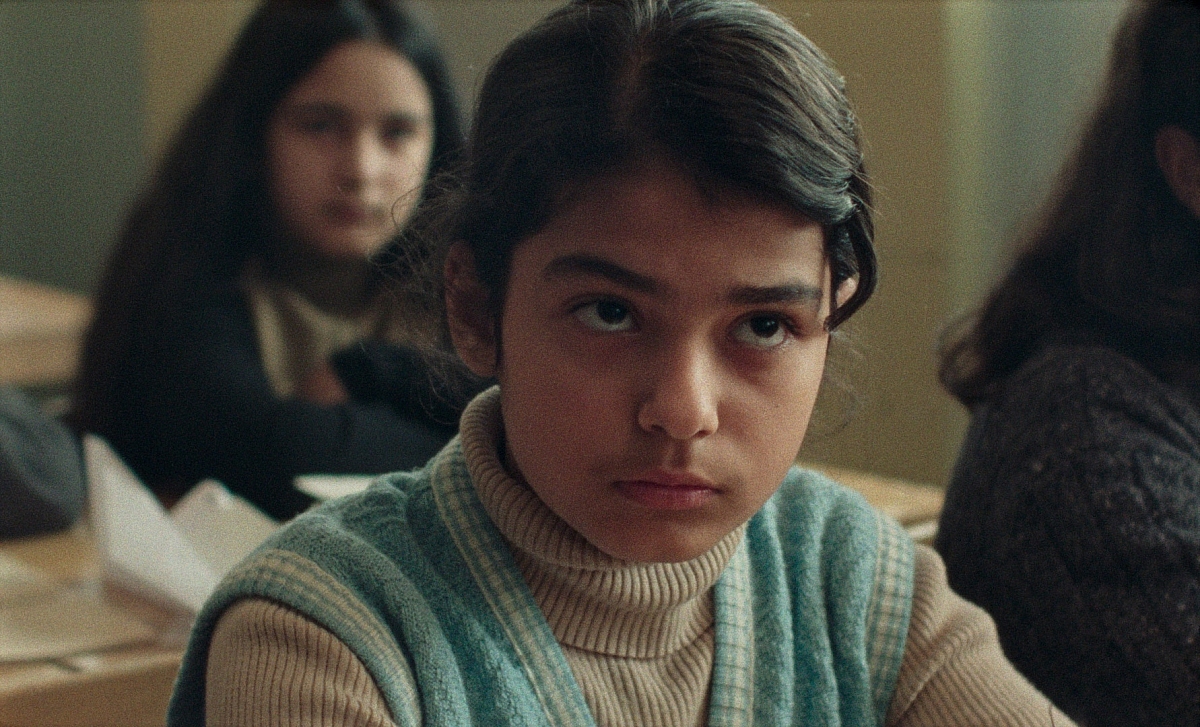
UNIVERSAL LANGUAGE, image courtesy of Metafilms.
Shooting on KODAK 16mm film, up-and-coming Canadian DP Isabelle Stachtchenko brought a stylish visual language to director Matthew Rankin's absurdist comedy Universal Language.
Spoken in Farsi and French, with English subtitles, the wintery film melds Winnipeg with Tehran, creating an unnamed cityscape for three intersecting stories: sisters Negin and Nazgol find a bank note frozen in the ice and try to find a way to get it out; Massoud leads a group of befuddled tourists on an increasingly bizarre walking tour of historic monuments and sites; and Matthew (played by the director himself) quits his job at the Quebec government and journeys home to visit his estranged mother.
With Iranian culture imbued into the settings and the action distinctively framed and filmed by Stachtchenko, the trio of narratives travel between brutalist neighborhoods – named the Beige, Brown and Grey Districts – and the storylines become ever more fantastic, including: a fixation on turkeys (both as food and wild animals); an all-hours bingo hall with an array of colorful characters; and the strangely-elevated significance of Kleenex tissues in various social situations.
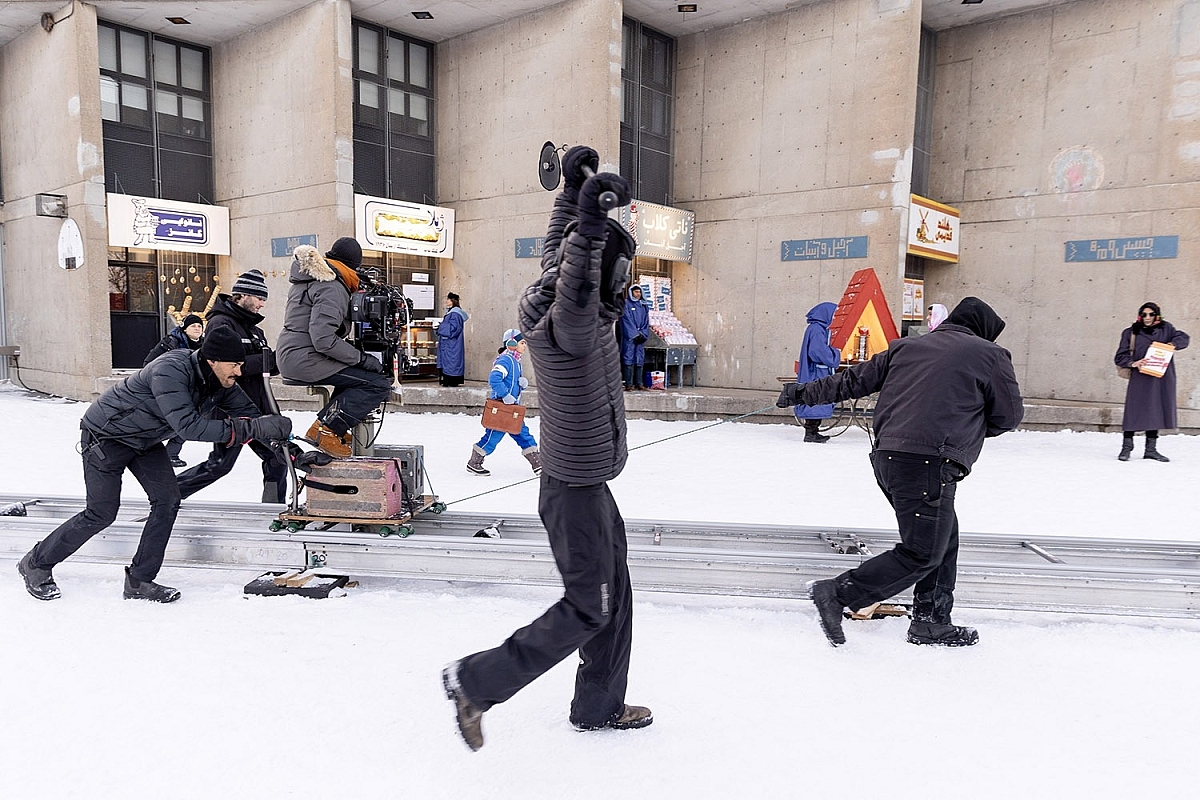
Photo by Maryse Boyce.
Made for $3M CAD ($2M USD/£1.7M GBP), Universal Language won the Audience Award at the 2024 Cannes Film Festival and earned widespread praise as a magnificently entertaining film, brimming with wisdom about identity, connection, inclusion and acceptance. It was selected as Canada's entry for the 2025 Oscars in the Best International Feature category, and Stachtchenko won a special jury prize for her cinematography at the Montclair Film Festival.
Rankin is a Canadian experimental filmmaker, whose shorts Mynarski Death Plummet (2014, DP Julien Fontaine) and The Tesla World Light (2017, DP Julien Fontaine), plus his Super16mm feature debut The Twentieth Century (2019, DP Vincent Biron), all earned awards and critical acclaim. Originally from Winnipeg, Rankin spent time studying filmmaking and cinema in Iran and has described Universal Language as “an autobiographical hallucination.”
"I hadn't worked with Matthew as a director before but had filmed him as an actor when I was the DP on Cette Maison (2022, dir. Miryam Charles)," says Stachtchenko, whose recent feature credits include L.A. Tea Time (2019, dir. Sophie Bédard Marcotte) and Jacques (2023, dir. Lysandre Leduc Boudreau).
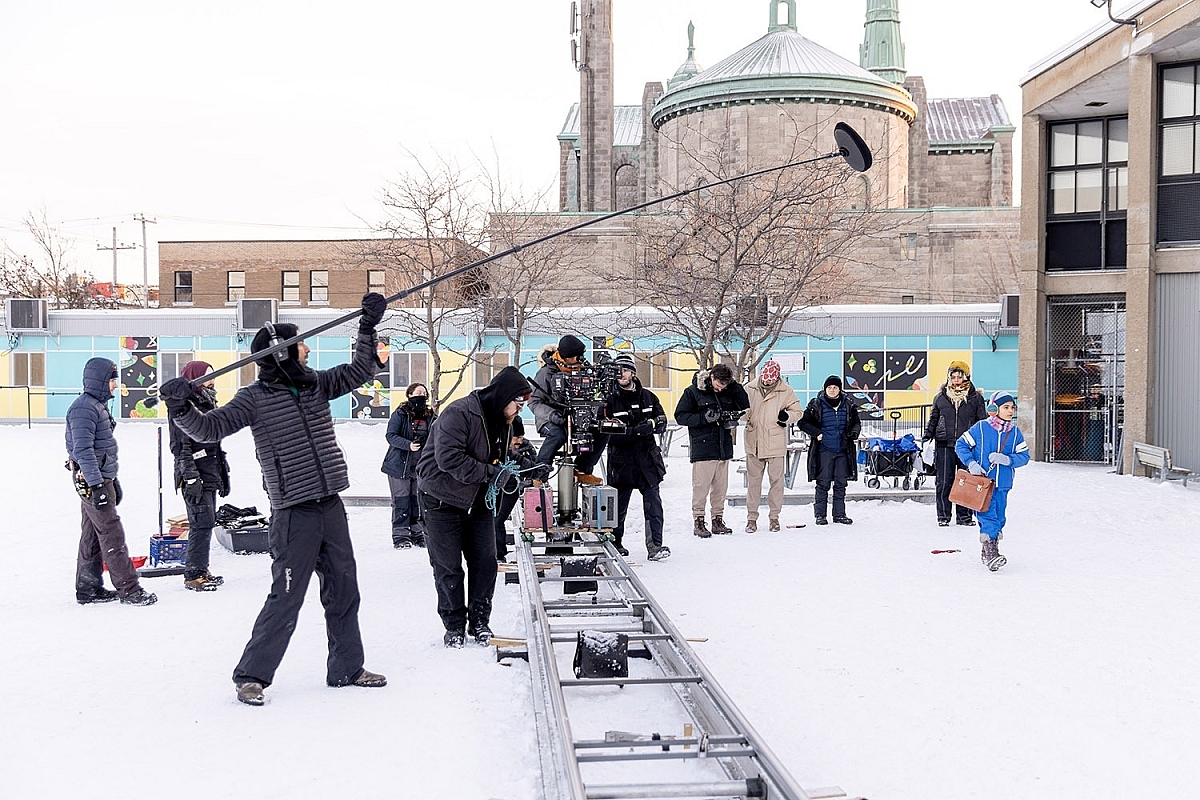
Photo by Maryse Boyce.
"During that production we both admitted to being fans of one another's work. After the production wrapped, I wrote to him, so as to keep in touch, and he then invited me to interview for Universal Language."
Stachtchenko studied filmmaking at NYU Tisch School of the Arts and Concordia University in Montreal and admits, “I think I was like every person at film school, in that I started out wanting to be a director. But I quickly realized that everything I found interesting about being a director was actually the cinematographer's job.
"I knew how to expose analog film, as I started taking photos when I was in high school. Most of my peers at film school hadn't ever touched film. So, when I was asked to shoot their student shorts, typically using a Bolex 16mm film camera, I had the confidence to step forward."
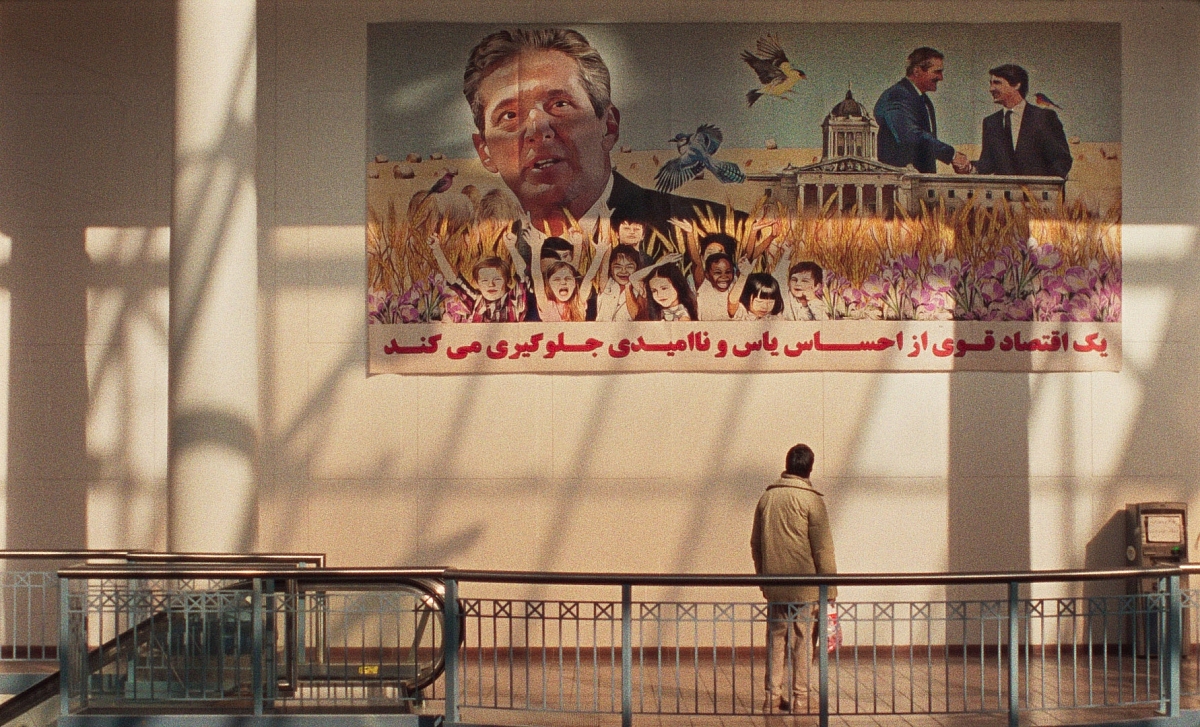
UNIVERSAL LANGUAGE, image courtesy of Metafilms.
Recalling Rankin's invitation, Stachtchenko says, “When I read Matthew's script, I said to myself that I needed to shoot this film. I wanted it. There was no other person that could shoot it. Even though I didn't know much about Iranian culture or Iranian cinema, and had never been to Winnipeg, it spoke directly to my soul.
"I loved Matthew's earnest and authentic approach to the narrative. It made me laugh throughout and had a hopeful message. I'd been reading a lot of scripts that were really dark about the future. This one had so much light and life to it."
When it came to creative references, Stachtchenko says these included Iranian cinema classics, such as Where Is the Friend's House? (1987, DP Farhad Saba), for its visually distinct meditation on landscapes and people, and the minimalist Taste of Cherry (1997, DP Homayun Payvar), both directed by Abbas Kiarostami. Visual influences also encompassed Jafar Panahi's The White Balloon (1995, DP Farzad Jadat), which invites audiences to see familiar surroundings from the perspective of a child's eyes, along with films by Jacques Tati and Aki Kaurismäki.
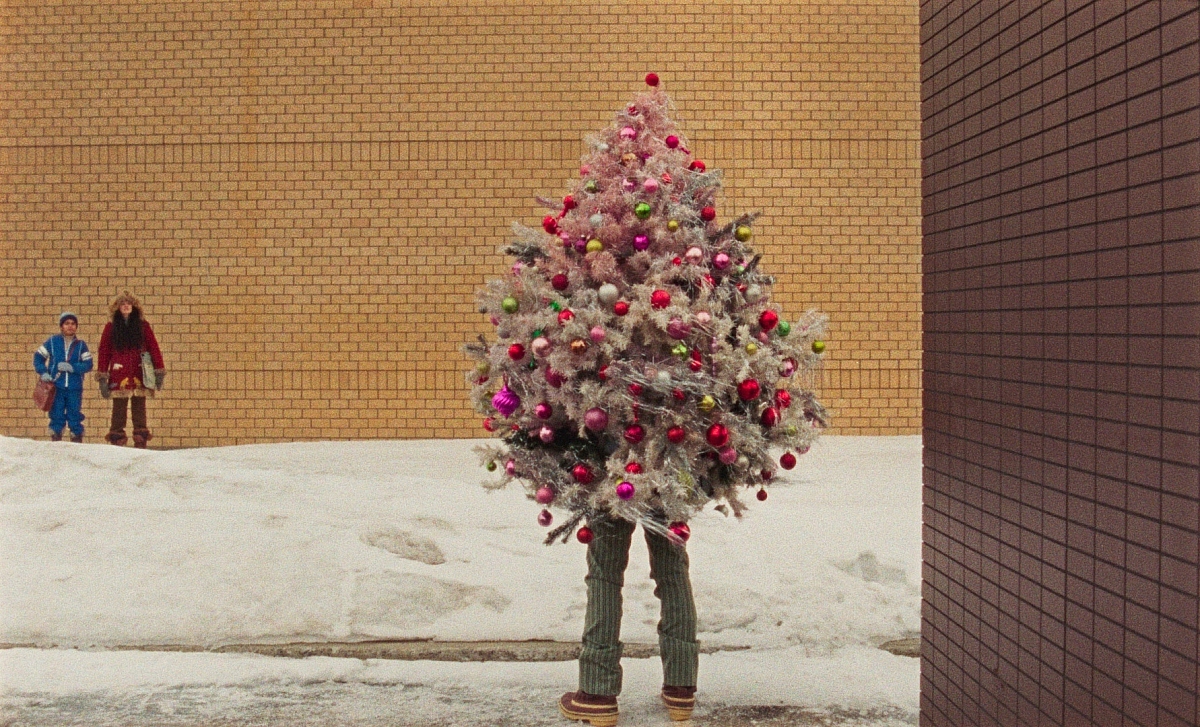
UNIVERSAL LANGUAGE, image courtesy of Metafilms.
"It was clear in our early discussions that Matthew wanted a certain stylization to the look of the film, such as having a meandering camera that did not necessarily look at the person speaking. As we talked about the film and visited the locations, new ideas developed about the camerawork and the framing, and we did a lot of drawing and figuring out what our frames would be. He's a very good drawer and open to ideas. It's quite astounding how similar the final film is to what became our storyboards."
Production on Universal Language took place between January to May 2023, at locations in Montreal that doubled for Winnipeg, followed by a week in Winnipeg. Most of the interiors were set-builds in an abandoned Hydro-Québec corporation building. Stachtchenko reports that temperatures in Winnipeg sometimes reached -40°C, with Montreal not much warmer at 25°C below zero.
The DP knew from the outset that Universal Language was to be shot on film. "Matthew has a big attachment to 16mm. He really likes the grain and the overall texture. As with my film school experience, so too now, film is my specialty. I love film deeply and have a profound, vibrational connection with filmed images. Sometimes I feel like one of those who harps on about how magical film is, but that's how it is for me."
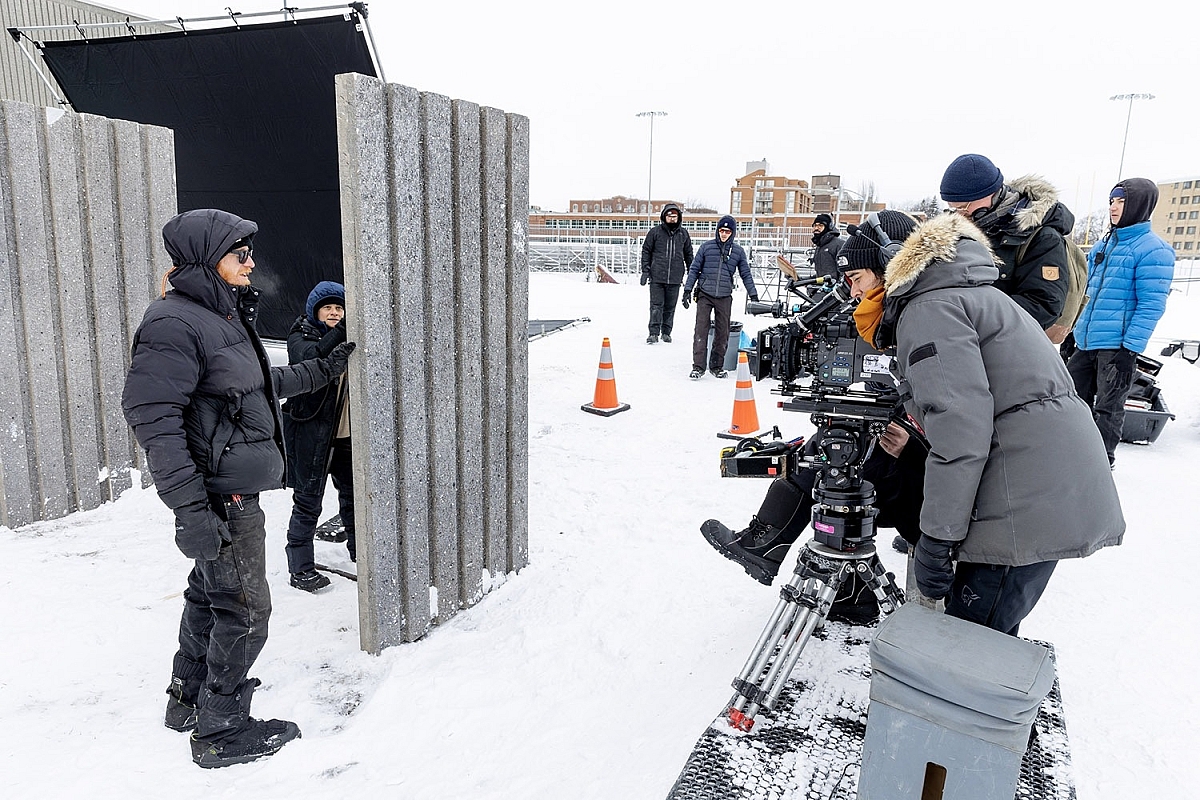
Photo by Maryse Boyce.
For the shoot, Stachtchenko went with an ARRIFLEX 416 16mm camera, plus Zeiss Super Speed primes and a compact, lightweight Canon 11-165mm T2.5 zoom. To fulfill the director's request for a small crew on certain occasions, she also selected a Bolex 16mm camera. The camera and lens package was supplied by Mels in Montreal, and Stachtchenko remarks that the ARRI 416s functioned perfectly well in the freezing conditions.
The DP went with KODAK VISION3 500T Color Negative Film 7219 for night interior/exterior scenes and KODAK VISION3 250D 7207 for day interiors/exteriors. Film processing and 2K scans were done at Mels.
"I know both filmstocks very well. They're the ones that are the most granular, and I'm comfortable with them. You can push the 500T quite far into underexposure, and it's still nice to look at," she says. “Although I could have shot the whole movie, including the daylight interiors/exteriors on 500T, I prefer not having a bunch of NDs on the front of the camera and find the 250D to be really lovely on the skin tones.
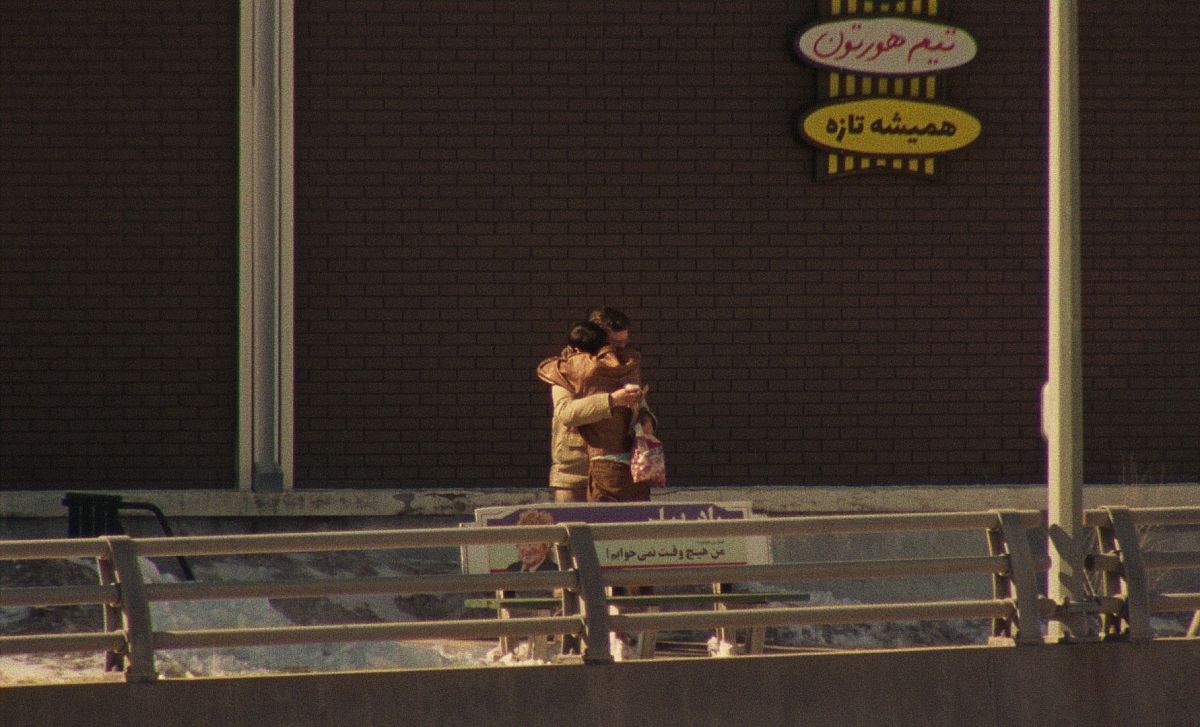
UNIVERSAL LANGUAGE, image courtesy of Metafilms.
"One of the advantages of shooting on film, especially on 16mm, is that you have a small crew and can move quickly between the setups. Sometimes Matthew wanted the footprint to be even smaller – just me, an assistant and him – for shots of himself set against the brutalist architecture, and that's when I went with the Bolex."
Stachtchenko operated during the production, supported by Steven Turcotte as focus puller, Julien Apollon the key grip, and Hugo Ferland-Dionne working as the gaffer.
"During prep Matthew insisted that the verticals in the image needed to be straight and rectilinear. On locked-off shots, this meant positioning the camera, sometimes on apple boxes, extended/elevated arms on the dolly and even tall scaffolds, in front of a building to achieve the correct perspective."
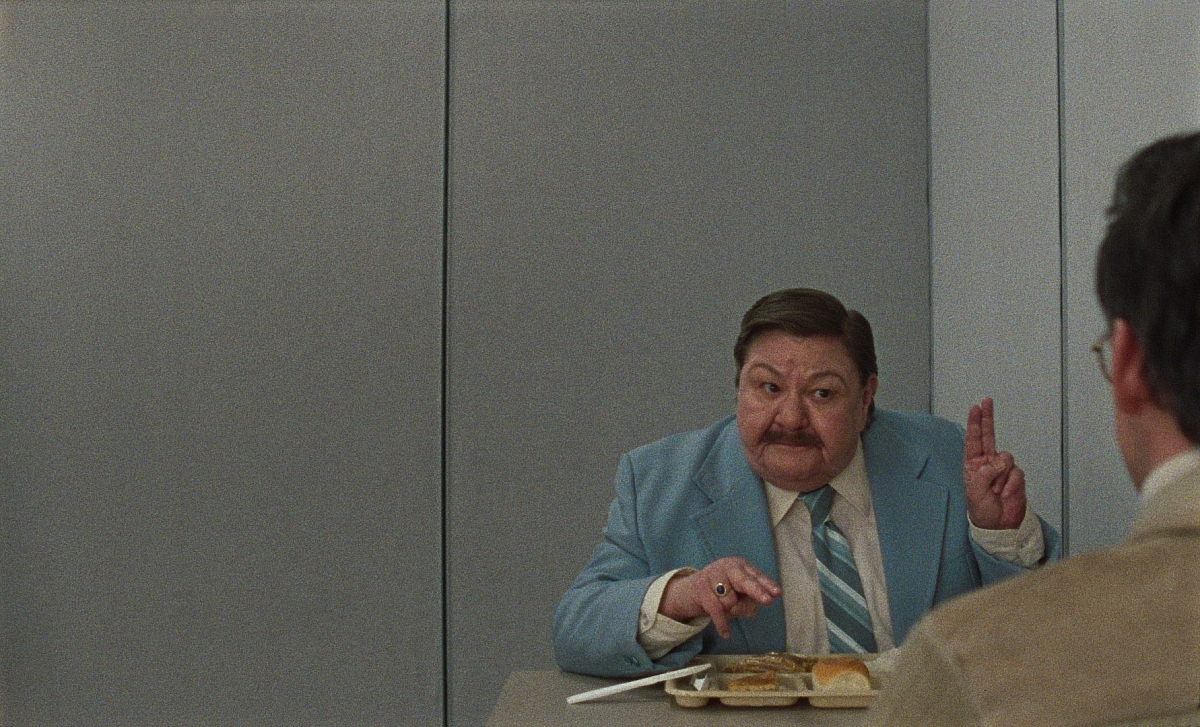
UNIVERSAL LANGUAGE, image courtesy of Metafilms.
This pursuit of rectilinear perfection bled into the way the camera would move, and the visual language of the film contains many linear camera moves from right-to-left, and vice versa. But the visual stylization of the camerawork did not stop there.
The DP explains, "Matthew liked the idea of contrasting those types of linear shots, with long meandering takes, featuring long pans and sweeping zooms, sometimes to transition between the different worlds in the story. I think that influence came from Kiarostami's movies, where often the person listening is the one on-camera and the person talking is off-camera, and the camera doesn't look at the action whatsoever.
"The way I thought about it was that the camera was a character in itself, kind of like a distracted kid who goes looking at something else. I thought it was incredibly fun to bring that element into the visual storytelling. Sometimes, those long takes were technically hard to accomplish, as I operated the camera on a normal tripod. I had to twist and turn my body through 180° while doing very specific movements and trying to land on a specific spot at a specific moment."
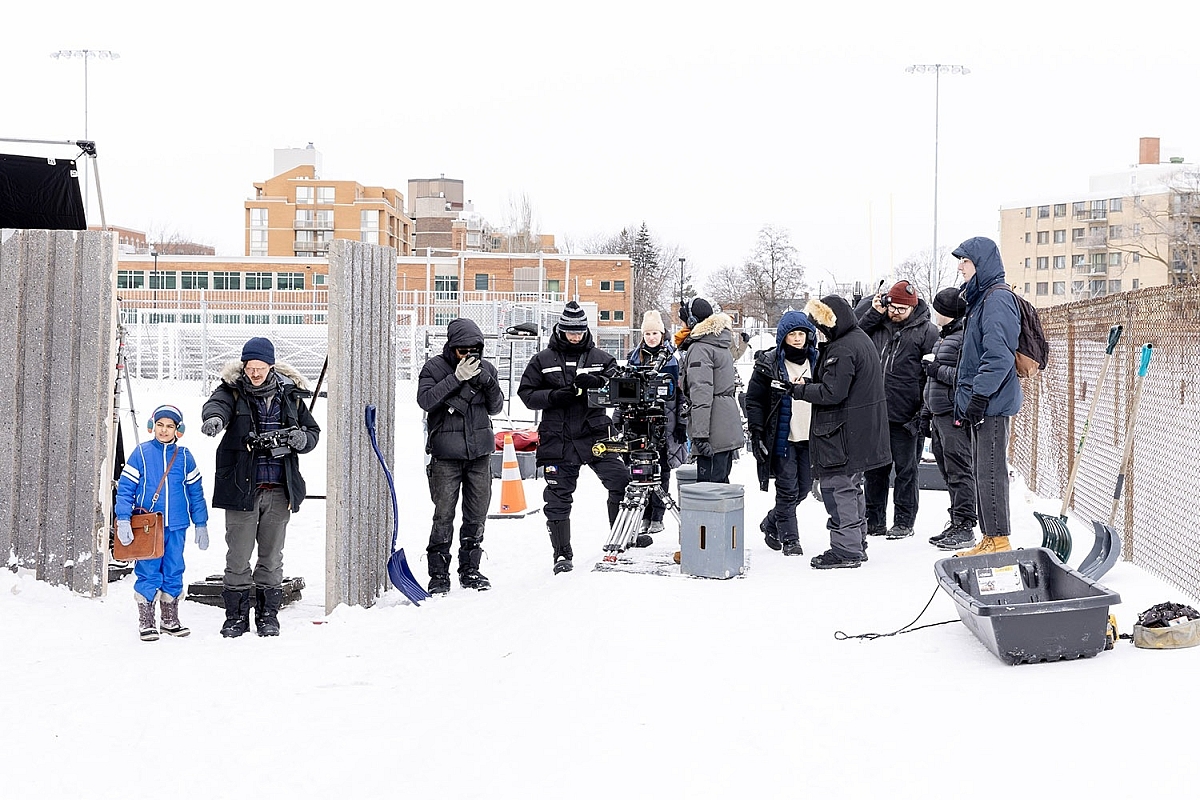
Photo by Maryse Boyce.
As for lighting, Stachtchenko had a small lighting package and used the natural, available light as much as possible.
"The overall lighting style was bold, stark and nothing too precious," she says. "Apart from some negative fill, I went with whatever the weather gods gave us on the day exteriors. I lit most of the smaller interiors, that you would typically imagine to be illuminated by fluorescents, with Astera Titan tubes and other similar LEDs. For the bingo hall we fitted a lot of Astera Helios tubes into lighting recesses in the ceiling, and supplemented the light on the characters with Robert Juliat spotlights. On the bigger night exteriors, we used Creamsource Vortexes, as they packed a really good punch."
Stachtchenko concludes, "I have spent my whole career making films I believe in. This one felt special as soon as I read the script, and the positive reaction it has received has surpassed my wildest dreams. It was of one of those shoots where every single person, right down to the production assistants and drivers, was really into what we were doing, and that created a lovely ambiance on the set."